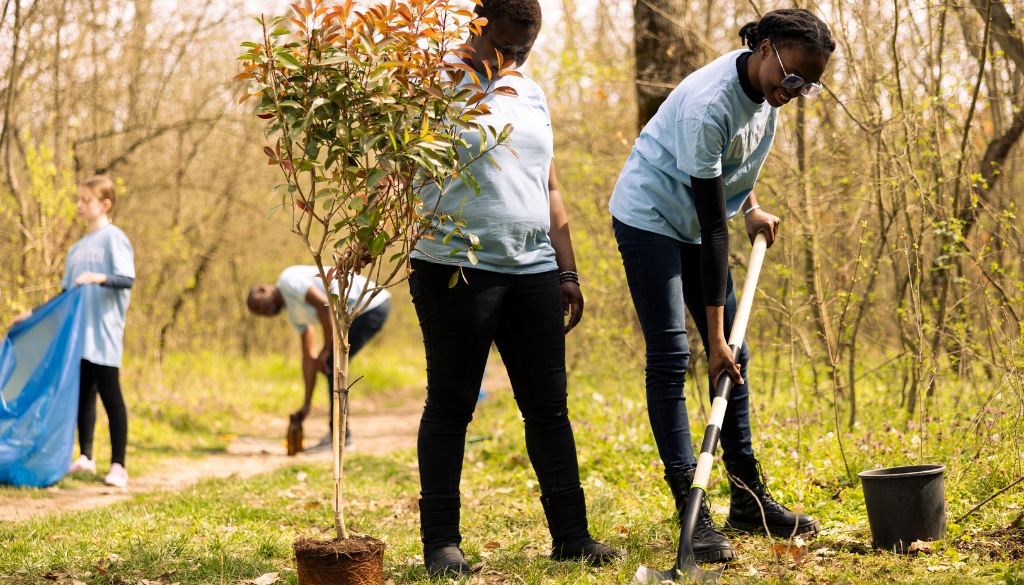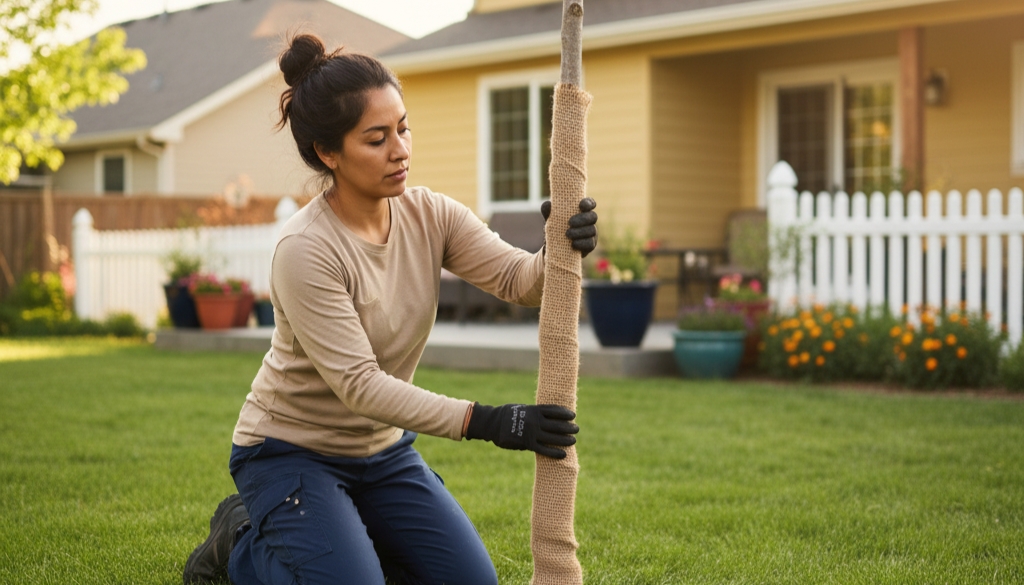Winters in Nassau County, Suffolk County, and NYC can swing between sunny afternoons and freezing nights, which puts a lot of stress on young or thin-barked trees. Luckily, tree wrap can help fix all these concerns and problems you may have! It’s one of the simplest ways homeowners here can protect trees from the temperature swings and winter sun our region is known for.
Do I Need to Wrap My Tree?
Not every tree in our region needs to be wrapped for winter. The main reason to wrap is to prevent sunscald and frost cracks, which happen when the bark warms up in the sun and then rapidly freezes when temperatures drop at night. Your tree likely needs wrapping if:
- It has thin bark (like maple, birch, beech, or linden).
- It was recently planted within the last 2 to 3 years.
- It gets strong winter sun on the south or southwest side.
- Your area gets regular freeze-thaw cycles (very common across Long Island and NYC).
- You’ve noticed cracking in past winters.
If your tree has broken or weak branches, or if it’s prone to cracking in winter, wrapping might help, but sometimes it’s best to get your tree professionally cut down to prevent bigger problems before they start. And if it’s healthy enough that you find you need to wrap it up, next is the step-by-step guide!

Step-by-Step Guide: Wrapping Your Trees for Winter
Materials List for Tree Wrapping
To apply tree wrap, you only need a few simple supplies:
- Commercial tree wrap (paper, burlap, or fabric-based)
- Plant-safe tape or soft twine
- Scissors
- Mulch (optional)
Which Material Works Best?
| Material | Best For | Why It Works |
| Paper tree wrap | Young, thin-barked trees | Breathable, easy to apply, great sunscald protection |
| Burlap | Trees in wind-exposed areas | Natural, breathable, great for blocking winter wind |
| Fabric tree guards | Trees needing extra insulation | Durable, reusable, great for harsher winter areas |
Step 1: Start at the Base of Your Tree
You should start wrapping your trees in late fall (November). Begin wrapping at the bottom of the trunk, about 1-2 inches above the soil line. This guarantees full coverage where temperature swings can have the most impact.
Hold the start of the wrap against the trunk and secure it gently with tape if needed.
Step 2: Wrap in an Upward Spiral
Move upward in a spiral pattern, overlapping each layer by about one-third. This creates even coverage without trapping too much moisture.
The goal is to wrap it snug, not tight. Tight wrapping can cause more harm than good. Wrapping too tightly around your tree can cause trapped moisture, growth restrictions, airflow reduction, and pest accumulation.
Step 3: Stop Below the First Branch of Your Tree
You only need to wrap the trunk. The branches do not need the same type of protection because they don’t experience the same temperature stress that the trunk does.
The trunk is the part that absorbs the most winter sun during the day and loses heat the fastest at night, which is what causes sunscald and frost cracks. Branches are thinner, more flexible, and naturally better at handling cold swings, so wrapping them isn’t necessary and can actually trap moisture or damage the limbs.
Step 4: Secure the Top
Once you reach the lowest branch of your tree, secure the top of the wrap with twine or plant-safe tape to prevent it from unravelling in winter winds.
Step 5: Add Mulch Around Your Tree (Optional)
A couple of inches of mulch around the base can help stabilize soil temperature. Just remember to keep mulch a few inches away from the trunk to avoid moisture buildup.

Step 6: Remove the Wrap in Spring
Once temperatures warm up consistently, usually late spring (April to mid-May), remove the tree wrap. Leaving it on too long can trap moisture and invite insects.
Benefits of Tree Wrapping
Using tree wrap offers several solid winter protection benefits:
- Prevents sunscald
- Reduces risk of frost cracks
- Helps young trees adjust to winter
- Protects thin, sensitive bark
- Adds a gentle insulation layer during temperature swings
Remember that not all trees benefit from tree wrap. Trees with thick, mature bark, like oaks, pines, and many established street trees, are naturally more resistant to sunscald and frost cracks, so wrapping them isn’t necessary.
Wrapping the wrong trees can trap moisture, create conditions for pests or fungus, and may even do more harm than good. Stick to young, thin-barked, or newly planted trees that are most vulnerable during the winter months.

What If I Can’t Use Tree Wrap?
If you don’t have access to proper tree wrap, here are a few safe alternatives:
- Burlap screens on the sunny side
- Shade boards placed near the trunk
- Plastic tree guards (for areas with rodent activity)
- Natural shading from small shrubs planted nearby
Avoid airtight materials like garbage bags, duct tape, or bubble wrap. They trap moisture and can cause bark damage.
That’s it! With just a little effort and the right tree wrap, your trees are all set to stay healthy and protected through the winter months.

